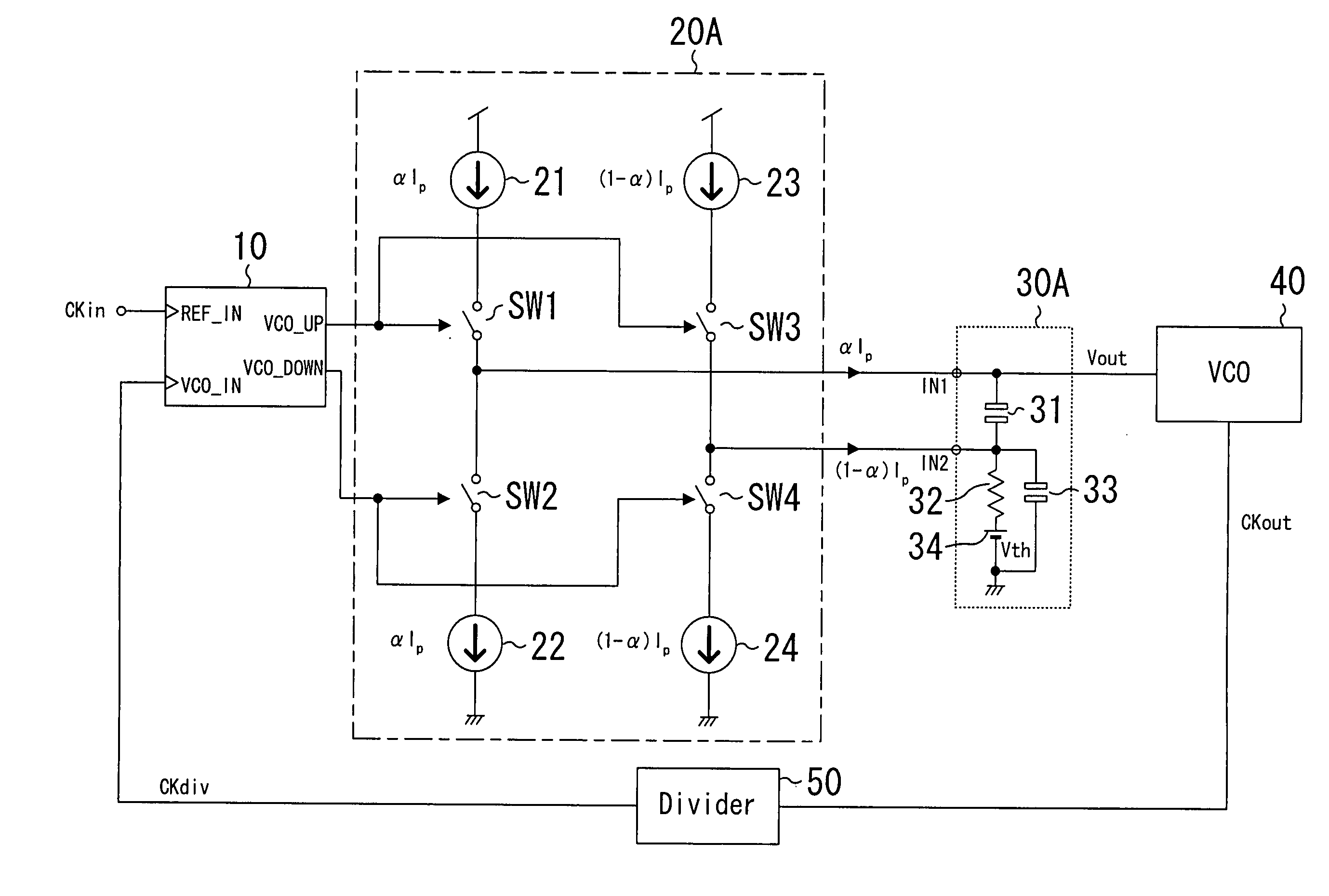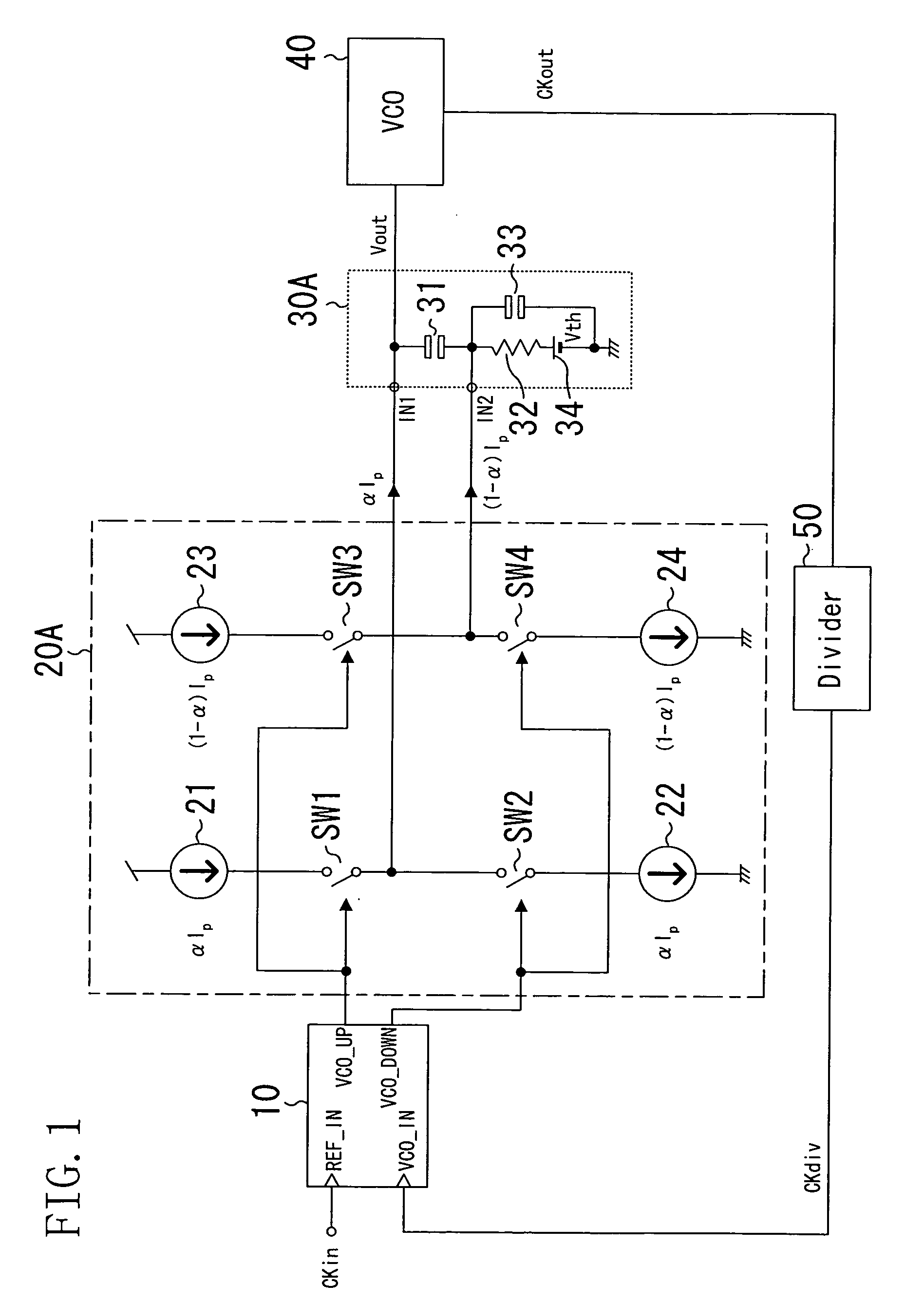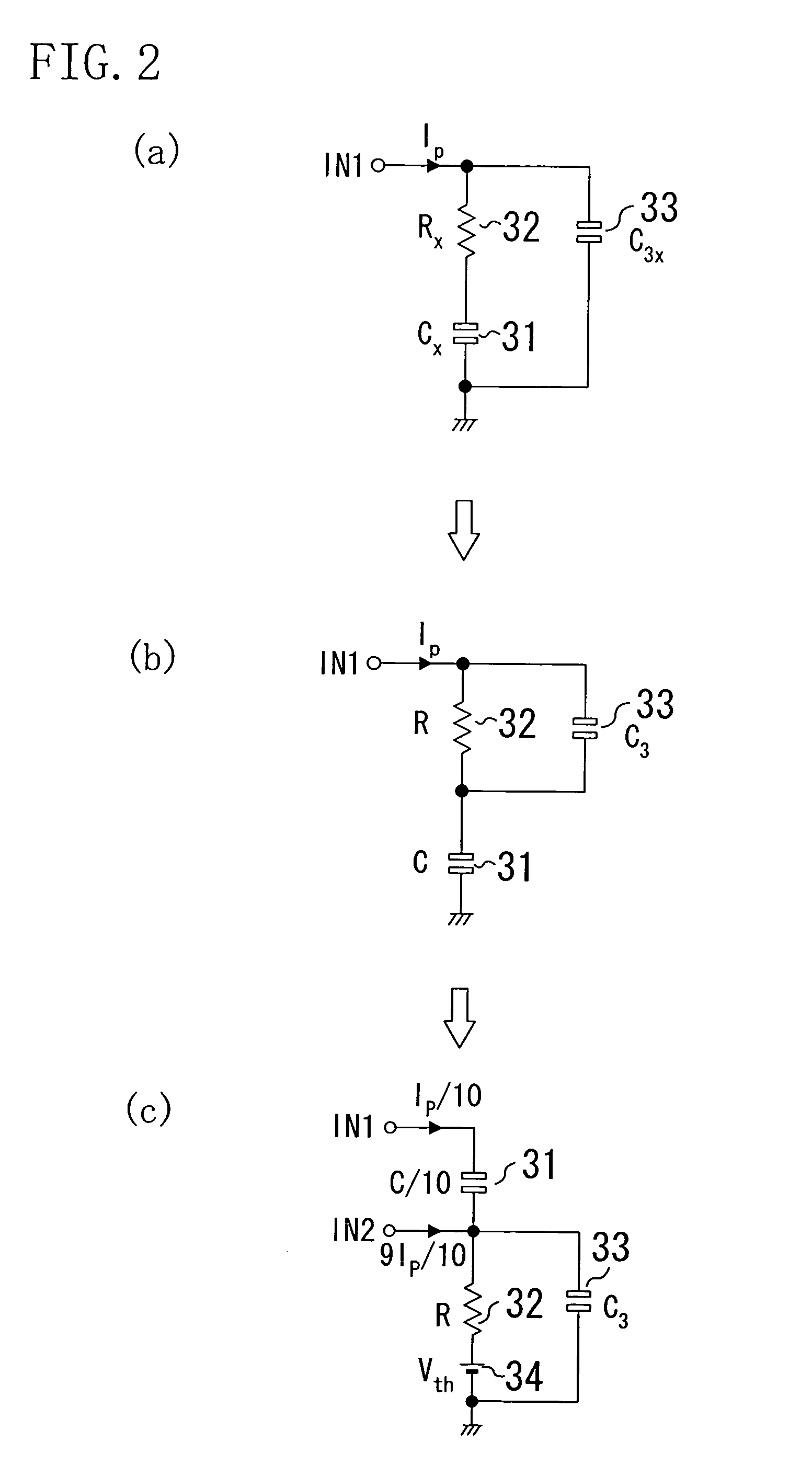Low-pass filter and feedback system
a feedback system and low-pass filter technology, applied in pulse manipulation, frequency selective two-port network, pulse technique, etc., can solve the problems of increasing circuit area, inability to countermeasure externally providing a large capacitive element, and increasing circuit siz
- Summary
- Abstract
- Description
- Claims
- Application Information
AI Technical Summary
Benefits of technology
Problems solved by technology
Method used
Image
Examples
embodiment 1
[0043](Embodiment 1)
[0044]FIG. 1 shows the structure of a feedback system according to embodiment 1 of the present invention. The feedback system of embodiment 1 is a PLL including a phase comparator 10, a charge pump circuit 20A, a loop filter 30A, a voltage controlled oscillator (output clock generation means) 40, and a frequency divider 50. Among these components, the phase comparator 10, the voltage controlled oscillator 40, and the frequency divider 50 are the same as those described above. Hereinafter, the charge pump circuit 20A and the loop filter 30A are described in detail.
[0045]The charge pump circuit 20A includes current sources 21 and 23 for charge, which supply electric currents αIp and (1−α)Ip, respectively, and current sources 22 and 24 for discharge. When signal UP is supplied, control switches SW1 and SW3 are brought into conduction so that electric currents αIp and (1−α)Ip are released. On the other hand, when signal DN is supplied, control switches SW2 and SW4 ar...
embodiment 2
[0055](Embodiment 2)
[0056]In the loop filter 30A of embodiment 1, the capacitive element 31 and the capacitive element 33 are connected in series. Thus, the voltage at input terminal IN1 is divided and applied to the capacitive elements 31 and 33. Therefore, if the voltage Vth of the power supply 34 increased too high, the voltage applied between the ends of the capacitive element 31 is relatively decreased. Then, if the decreased voltage is lower than the threshold voltage of a MOS transistor, it is difficult to use a MOS capacitor for the capacitive element 31. In view of such, now consider a loop filter having filter characteristics equivalent to that of a conventional filter, wherein the capacitive element 31 and the capacitive element 33 are connected in parallel.
[0057]FIG. 5 shows the structure of a loop filter according to embodiment 2 of the present invention. The loop filter 30B of embodiment 2 includes a capacitive element (first capacitive element block) 31, a resistive e...
embodiment 3
[0071](Embodiment 3)
[0072]In the circuit structure described in embodiment 2, if sufficient linearity is secured between the output voltage Vout of the loop filter 30B and the oscillation frequency of the voltage controlled oscillator 40, and it is not necessary to largely change the oscillation frequency of the voltage controlled oscillator 40, a power supply which outputs a predetermined voltage may be connected to the resistive element 32 in place of the voltage buffer circuit 35. Hereinafter, a loop filter having a structure wherein the voltage buffer circuit 35 in the loop filter 30B is replaced with a power supply is described.
[0073]FIG. 9 shows the structure of a loop filter according to embodiment 3 of the present invention. The loop filter 30C of embodiment 3 includes a capacitive element (first element block) 31, a resistive element 32 and a power supply 34 which are connected in series and constitute the second element block, a capacitive element (third element block) 33,...
PUM
 Login to View More
Login to View More Abstract
Description
Claims
Application Information
 Login to View More
Login to View More - R&D
- Intellectual Property
- Life Sciences
- Materials
- Tech Scout
- Unparalleled Data Quality
- Higher Quality Content
- 60% Fewer Hallucinations
Browse by: Latest US Patents, China's latest patents, Technical Efficacy Thesaurus, Application Domain, Technology Topic, Popular Technical Reports.
© 2025 PatSnap. All rights reserved.Legal|Privacy policy|Modern Slavery Act Transparency Statement|Sitemap|About US| Contact US: help@patsnap.com



